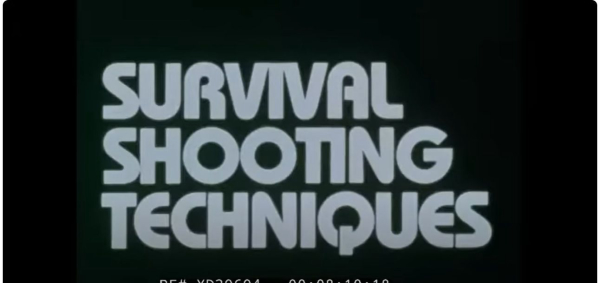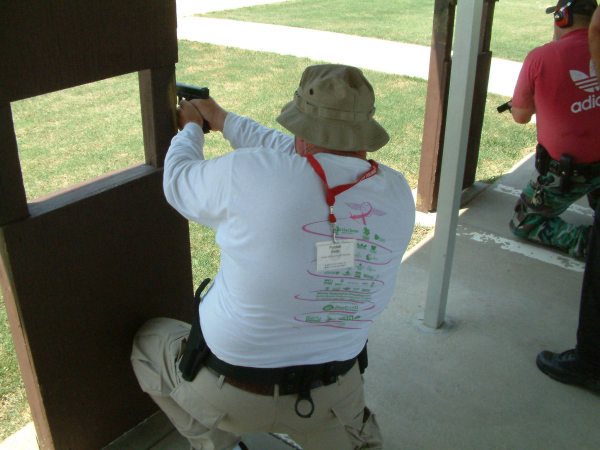Two weeks ago, I ran a story here about sustainment. It was mostly about physical skills. If you recall, we approach all this from a triangle – the Combat Triad: Marksmanship, Gunhandling and Mindset. For today, a couple of days after FBI released the 2023 “Law Enforcement Officers Killed and Assaulted” report, we move to mental conditioning – including mindset.
After the criminal outrage at Newhall, CA – among other tragic events – the “officer survival movement” kicked off. While gear was part of the equation, it wasn’t but a small part of what ASLET would later come to refer to as “keeping the walls bare.” The American Society of Law Enforcement Trainers was referring to the Law Enforcement Officer Memorial Wall – those killed in the line of duty.
Too often, we look for hardware solutions; the analog to “take a pill to lose weight” or issue handguns of larger caliber or with new technology ammunition to solve the problems of officer injury and death on the street.

And the lesson isn’t just for the cop on the beat – it’s for the lawfully armed citizen as well.
While the classic mindset discussion is about diminishing the natural reluctance to engage in (potentially lethal) combat, mental conditioning goes further. It’s a constant “what-if?” game one plays while in Yellow.
The current LEOKA report shows some reduction in officer fatalities while there’s an increase in officer assaults.
That tells us more about the level of trauma med care than it does about the battlefield. I feel a lot of the lessons paid for in blood and misery are being lost.
Memory-holed.
Going back to an old training film, a copy of which was found online, brought up old lessons. I’ll repeat those here. While Calibre Press is still around, the team that constructed Survival Shooting Techniques and the early books covering the topic have moved on.
Criminal offenders aren’t like you. If you’re an on-duty police officer, “you’re a highly visible authority figure – and some will take advantage of that fact.”
They’re not worried about shooting review boards, civil litigation, social repercussions or their emotions; they’re just trying “not to get caught.” Offenders choose their actions, have their plans and they know when the shooting will occur.

A good many are psychos – look at the depressing recent trend of “active killers,” incited by sensational “journalism.” While you try to overcome a natural reluctance to take a human life, they already have their plans in place. And many expect to get shot – and to die – if they take on the law or an armed citizen.
As it says in the training film, “… to them, it’s just a matter of when.”
What to do?
Practice a plan.
Follow good avoidance-evasion-escape procedures and barring that, good survival shooting procedures.
Anticipate danger.
Sound paranoid? It may to Pollyanna, but in the 21st Century – like the preceding ones – it’s merely a recognition that the world can be an unfriendly place and life (of any kind) is an anomaly in the universe as we know it.
Think about your approach to any situation. If you’re a lawfully armed citizen, avoidance is not cowardly but smart. Any time that little voice says “uh-oh,” or you feel the hairs stand up, move – back out, move laterally; use distance and put obstacles between you and the problem.
For peace officers, consider the length of the currently trendy Ford Police Interceptor Utility vehicle; according to their specifications, it’s 16.57 feet long, bumper-to-bumper.

For someone armed with a bludgeon or cutting instrument, moving over flat ground without obstructions, that’s less than a second from closing the distance and inflicting potentially fatal injury.
When was the last time you tried to make an accurate hit from the holster in less than a second at fifteen feet? What happens when you add lateral movement?
Have you considered any of this?
If you’re on the job and you get a silent alarm call – or noise disturbance, or about anything else – practice invisible deployment. Park a distance away. Look for ‘counter-surveillance,’ like cameras, potential get-away drivers and the like. Get to where you can see and not be seen.
Study the patterns of engagement. Don’t do what’s expected of you. Maintain situational dominance – using cover or, at least, concealment.
The base of the Combat Triad is mindset. The foundation of mindset is mental conditioning for combat. It’s the software component. Make your best use of it.
Make it home at the end of the day.
— Rich Grassi